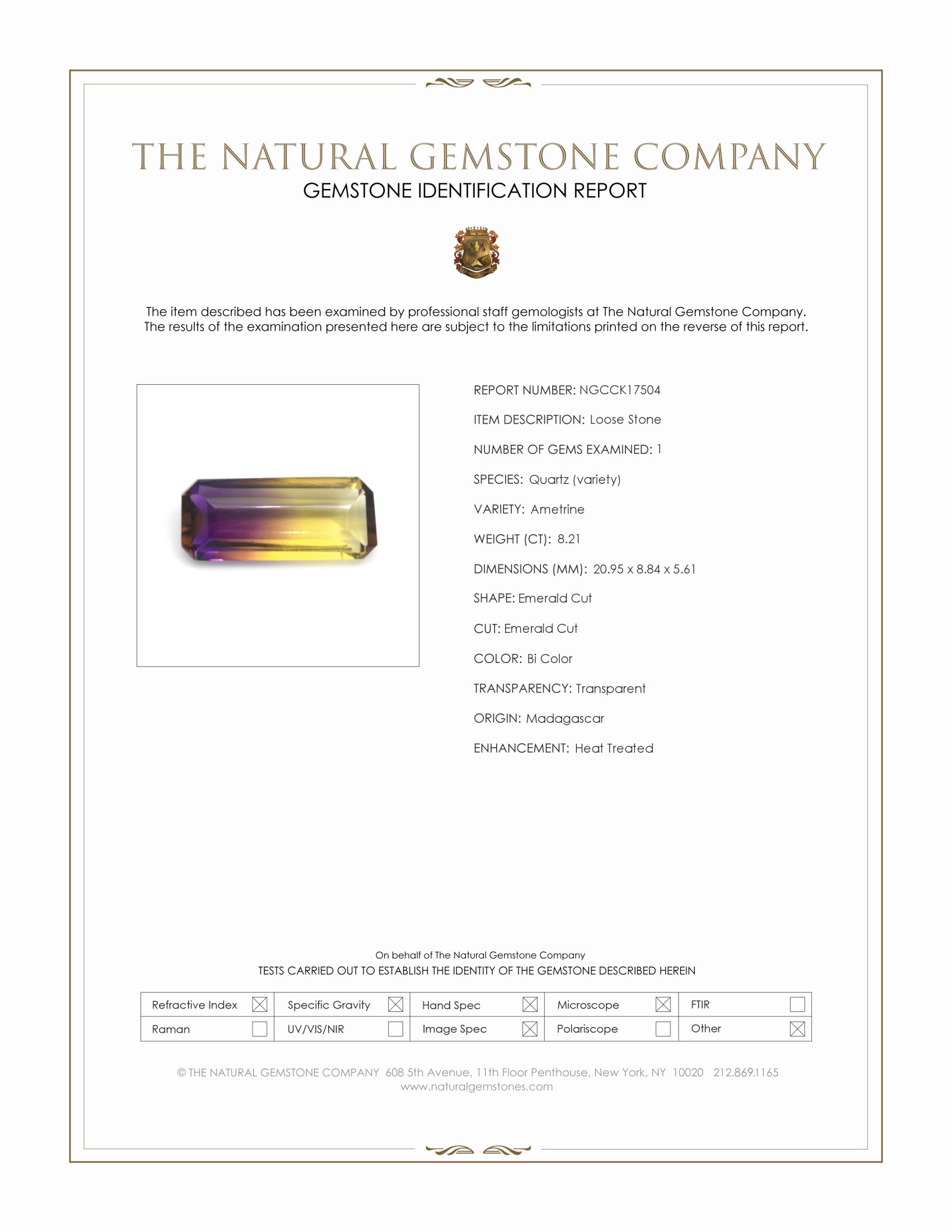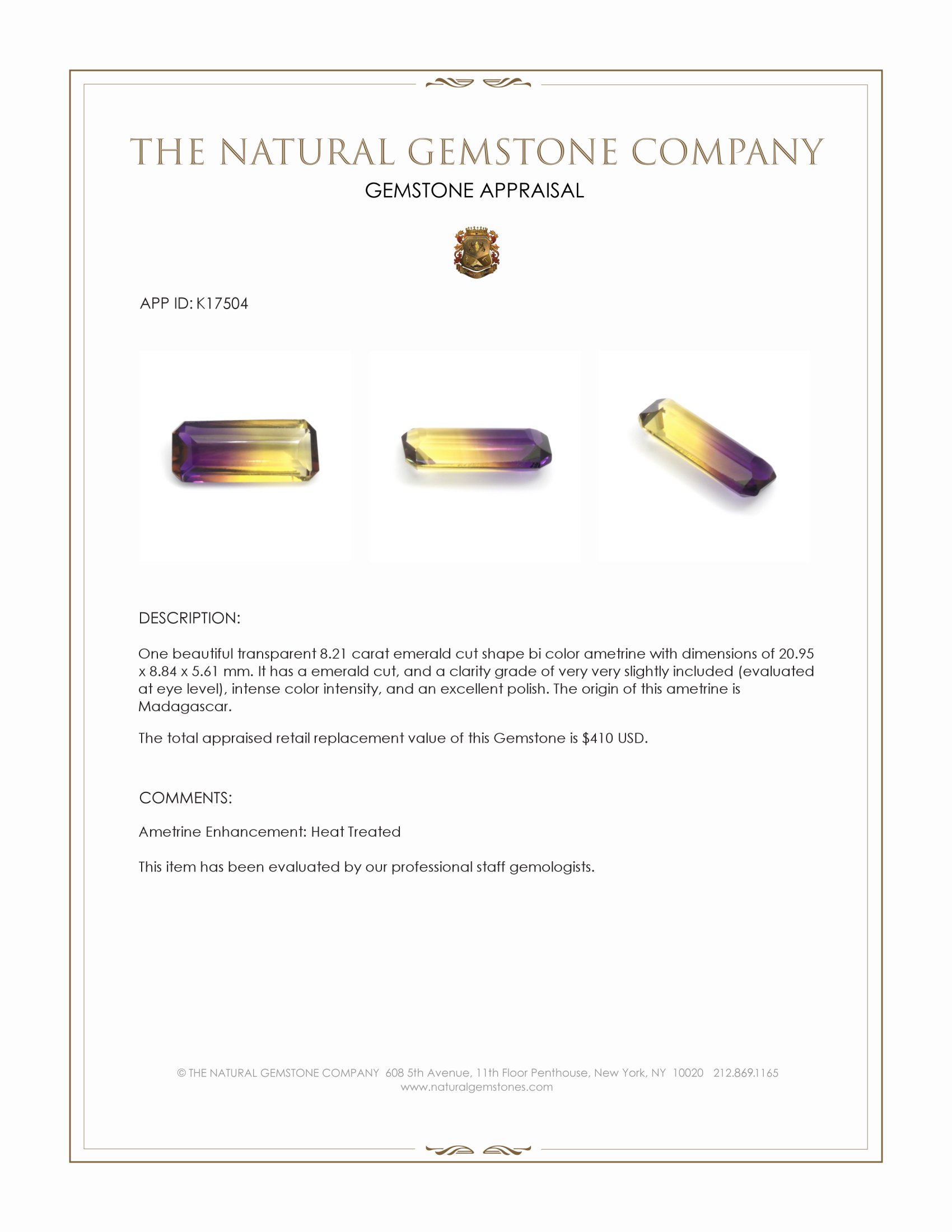- Stone14
- Reports2






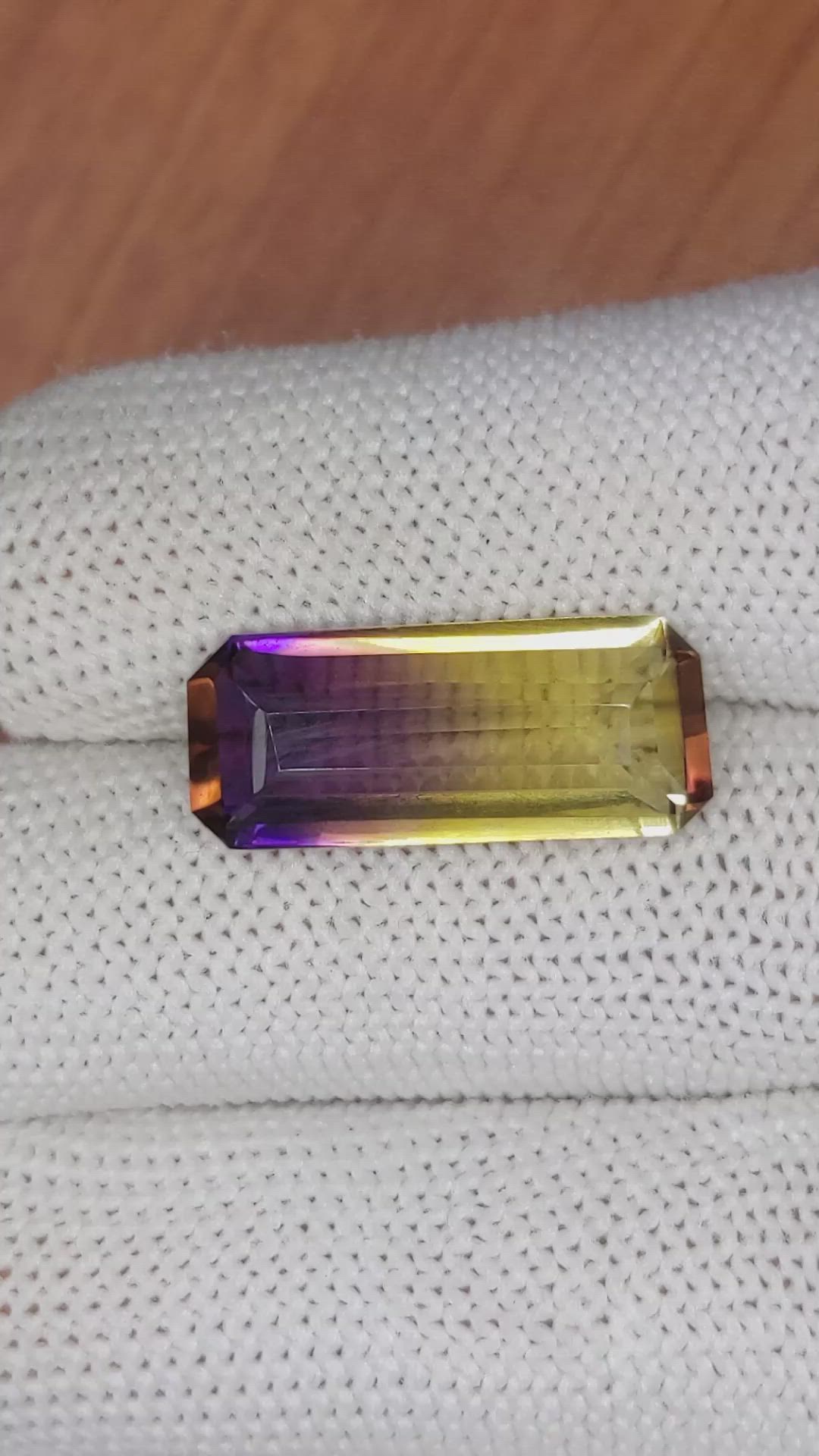
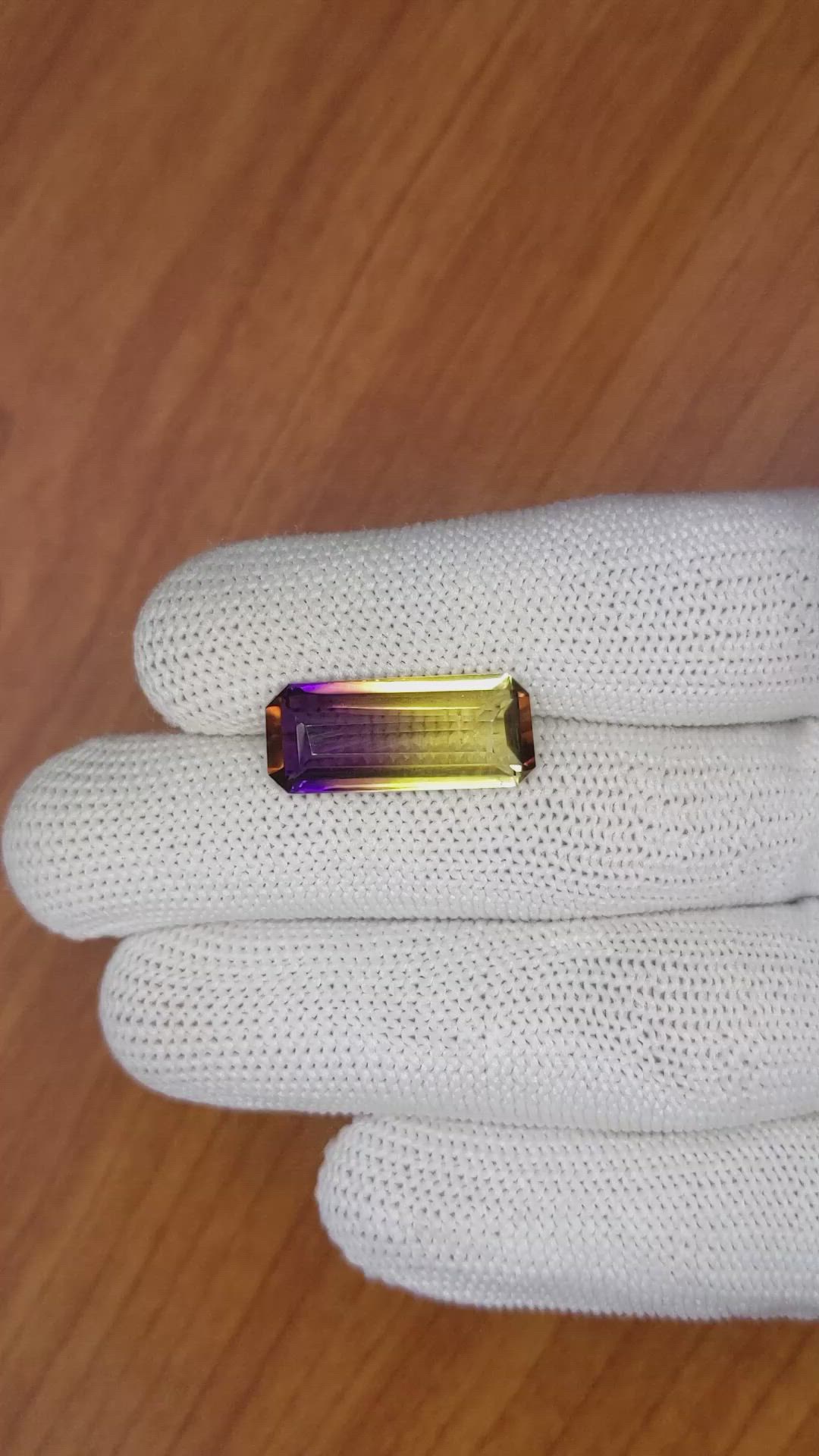

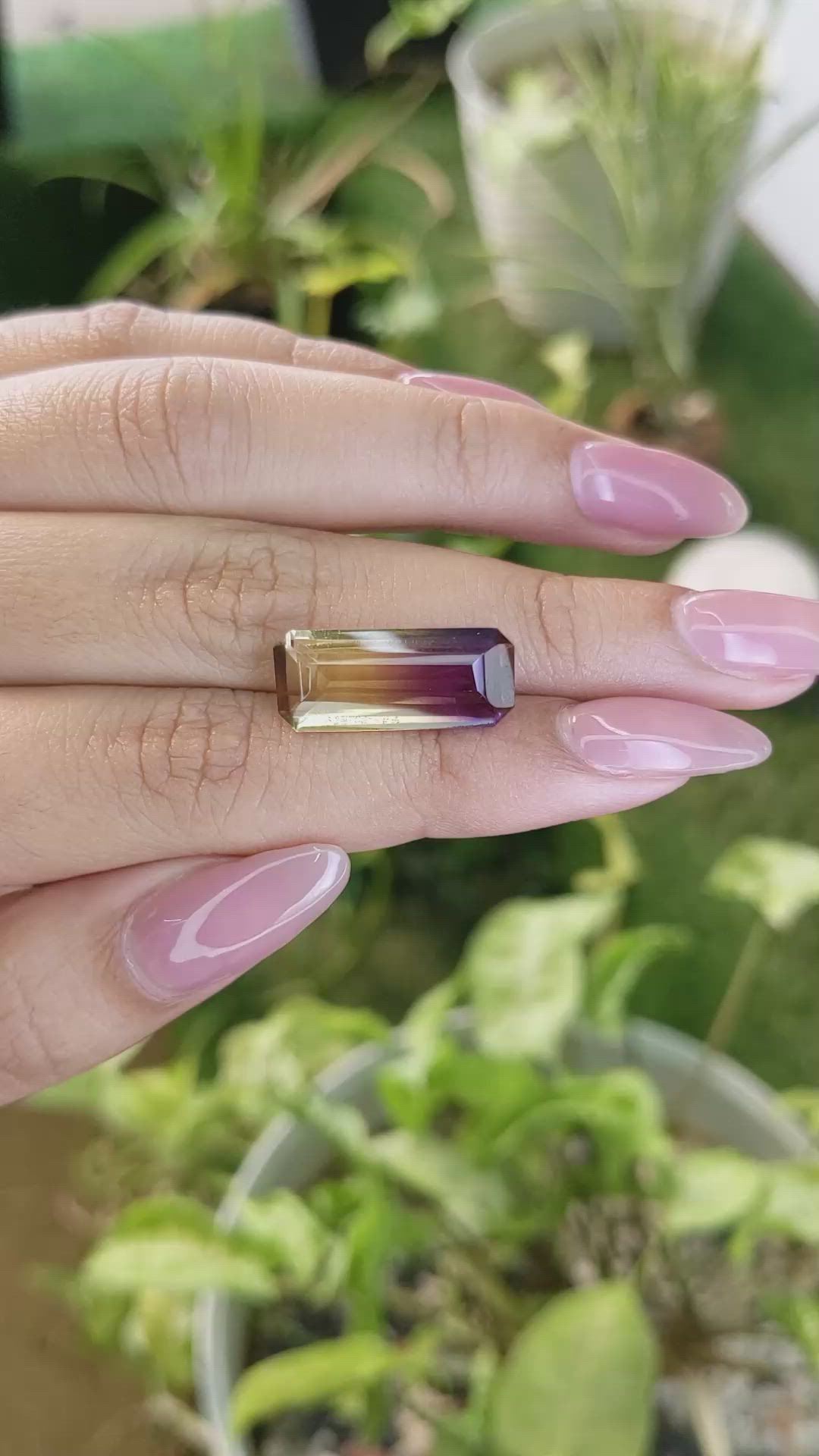
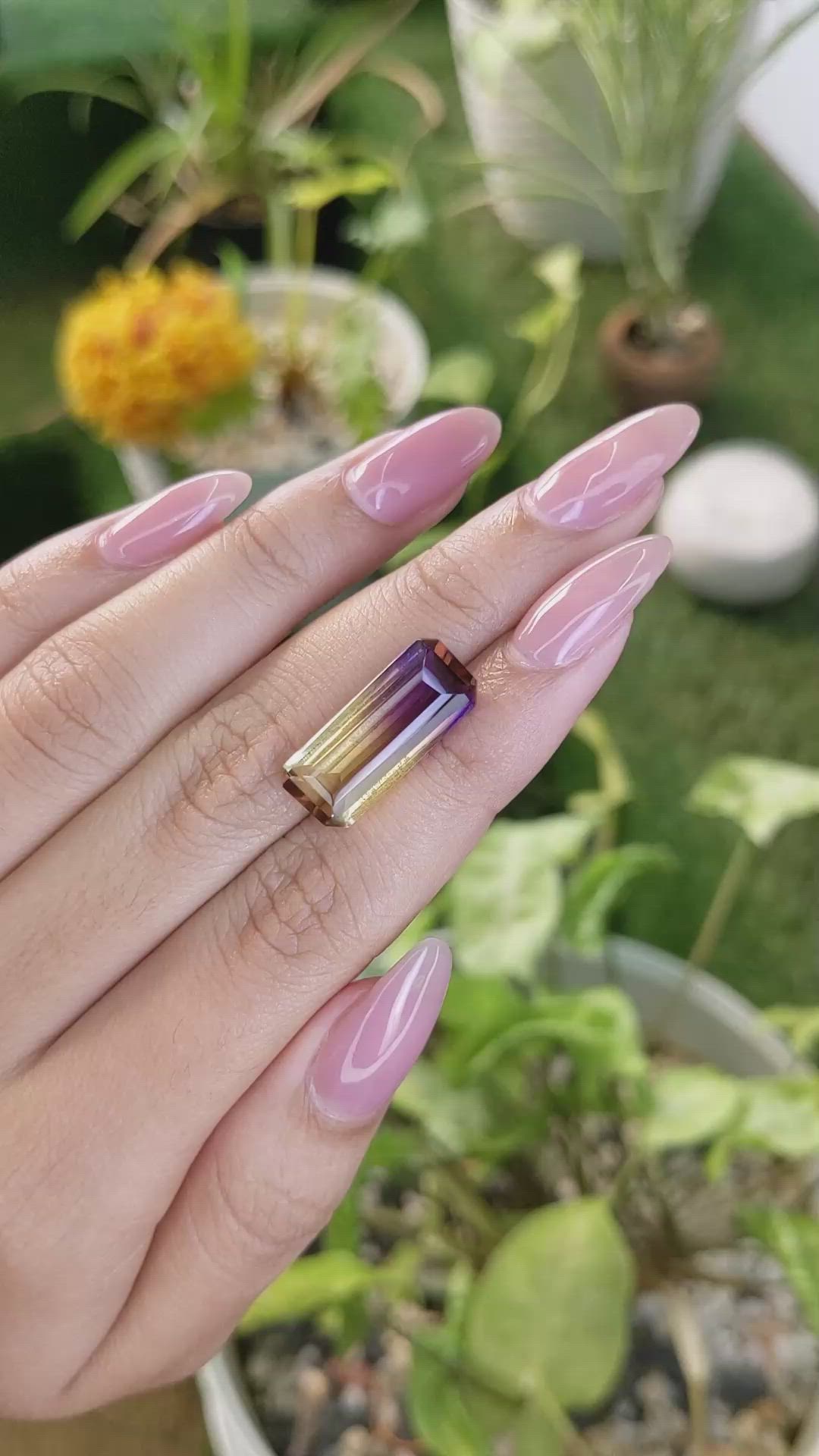


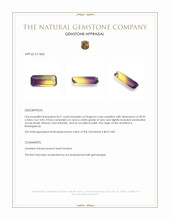
8.21 Ct. Ametrine from Madagascar
This loose stone ships by Jan 11
Item ID: | K17504 |
|---|---|
Dimensions (MM): help | Length: 20.95 Width: 8.84 Height: 5.61 |
Weight: | 8.21 Ct. |
Color: help | Bi Color |
Color intensity: help | Intense |
Clarity: help | Very Very Slightly Included |
Shape: help | Emerald Cut |
Cut: | Emerald Cut |
Cutting style: | Faceted |
Enhancements: help | Heat Treated |
Origin: help | Madagascar |
Per carat price: help | $50 |
This listing presents a single transparent bi color ametrine weighing 8.21 carats, with an emerald cut and precise dimensions of 20.95 by 8.84 by 5.61 millimeters. The gem exhibits intense color intensity, transitioning distinctly between the purple and golden yellow zones that define high quality ametrine. Clarity is graded as very very slightly included when evaluated at eye level, indicating that internal features do not distract from the gem at normal viewing distances. The stone has received a heat treated enhancement, and it is offered with full disclosure of that treatment and of its origin in Madagascar. The cut is an elongated emerald shape, executed to emphasize the straight step facets and clean pavilion angles, and the polish has been assessed as excellent, delivering smooth facet surfaces and sharp facet junctions. This ametrine is available through The Natural Gemstone Company, presented as an example of a naturally formed, gem quality specimen with clear documentation of its characteristics.
Visually the stone offers a strong and appealing dichroism, with a saturated purple at one end that graduates into a warm golden yellow at the other, producing a balanced bicolor effect that is both striking and refined. The emerald cut enhances this effect by creating broad, planar facets that reveal the color transition in a linear, architectural way, rather than scattering it. The proportions and elongated table yield a notable face up presence for an 8.21 carat weight, making the stone well suited to rings, pendants, and bespoke settings where an elegant linear aesthetic is desired. The excellent polish contributes to clean reflections and controlled light return, which supports the perception of depth and color saturation. Photographs supplied with the gem show the stone in hand for scale, illustrating how the dimensions translate to wearability and presence on a finger. The weight to dimension ratio aligns with the expected density and cutting geometry for ametrine, yielding a comfortable balance between brilliance and the dramatic color zoning that collectors and designers often seek.
From a clarity and treatment perspective the grading of very very slightly included at eye level indicates that any internal features are minor and do not interfere with the gem at ordinary viewing distances. Under magnification, natural growth zoning and minor inclusions may be observable, and these features are in many respects desirable, as they verify natural formation processes and provide a fingerprint for the specimen. The stone has undergone heat treated enhancement, a common and stable practice for many natural colored gemstones that can improve color uniformity and remove unwanted tones while preserving the underlying natural zoning that defines an ametrine. Heat treatment in this instance does not imply artificial synthesis, and the origins in Madagascar remain a point of provenance that contributes to the gem value. Care for a heat treated natural ametrine is straightforward, with routine precautions recommended to avoid abrupt thermal shock and exposure to harsh chemicals, and The Natural Gemstone Company provides guidance on handling and setting to maintain the stone in optimal condition over time.
When compared to lab grown gemstones, natural ametrine presents several advantages that may be important depending on the buyer objective. Natural stones carry geological provenance and unique internal structures that arise from complex conditions of temperature, pressure, and chemistry within the earth, and those features create color zoning, growth lines, and inclusion patterns that cannot be perfectly replicated in a laboratory run. As a result each natural ametrine is inherently one of a kind, offering a combination of rarity and individuality that appeals to collectors and connoisseurs. Natural specimens from well regarded locations such as Madagascar also have established market recognition, which can support long term value retention and a collector market that distinguishes natural origin from synthetic alternatives. In addition, natural ametrine with minimal visible inclusions and excellent polish, such as this 8.21 carat emerald cut example offered by The Natural Gemstone Company, may be preferred for bespoke jewelry where the narrative of origin and the visual complexity of natural zoning are integral to the design. Lab grown stones offer consistent chemistry and lower cost, and they serve an important role in the market where uniformity and budget considerations dominate, however they lack the geological history and the singular character that a natural, heat treated, Madagascan ametrine embodies. For purchasers who prioritize natural origin, documented treatment disclosure, and the intrinsic variability that makes each gem unique, this ametrine represents a compelling option within The Natural Gemstone Company inventory.









